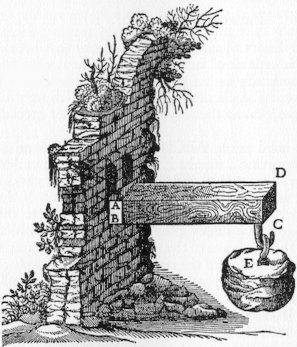Old Galileo
Today, an old man writes his most important book. The University of Houston's College of Engineering presents this series about the machines that make our civilization run, and the people whose ingenuity created them.
I've just finished Dava Sobel's new book, Galileo's Daughter. Sobel describes the intense affection between Galileo and his semi-legitimate daughter. Born Virginia, she became a nun in the San Mateo cloister, near Florence, and took the name of Maria Celeste.
Sobel's powerful account tells how Galileo did all his science in close concert with his Church, and it reveals the sustaining force of Maria Celeste's letters. That sustenance was especially important after Galileo's former friend, Pope Urban VIII, turned upon his book, Dialogue Concerning the Two Chief World Systems. As punishment, Galileo was placed under house arrest.
Aging, depressed, and exhausted from his trial, Galileo was sent back to northern Italy and confined at the Archbishop's residence in Siena. The Pope finally decided that Galileo had access to too many people there and removed him to his small house near the cloister, where he, like his daughter, would live in isolation.
The two world systems in Galileo's book had been the new Sun-centered Copernican world and the old Earth-centered Ptolemaic one. His trial had revolved around the question: Was he presenting the Sun-centered system as a hypothesis or as a fact? The Inquisition decided that the characters in the book presented far too convincing an argument that Earth really does revolve around the Sun -- that Galileo took Earth's motion to be no mere hypothesis.
The book got loose outside Italy, and it forcefully argued Copernicus' case. But, despite its huge impact, Galileo's most important work was yet to come. While he was under house arrest with his old friend, the archbishop of Siena, Galileo began work on his last book, Two New Sciences, about materials science and dynamics.
But then Galileo was sent back to his house near Maria Celeste, only to see her die a few months later. Galileo was inconsolable. A total immersion in the Two New Sciences was his only means for coping with terrible grief.
And so Galileo laid out the foundations of modern engineering. He set the stage for Isaac Newton, who was born the same year he died. The aging Galileo gave us the beginnings of beam theory. He sketched out the notion of similitude theory when he showed that a large animal cannot be the scaled-up version of a smaller animal. He published his famous law of the pendulum for the first time. He explained the trajectories of projectiles.
Here Galileo emerges from humiliation and grief completely freed from Aristotle's old science. He writes upon a clean slate as he creates modern mechanics. To get his book published Galileo lent the manuscript out of Italy and then claimed not to've given permission for its publication. Ironically, one clandestine visitor to his house was John Milton, who would later do his own best work in prison. And I must say: I find the liberating power of adversity to be one of the more disquieting facts of life.
I'm John Lienhard, at the University of Houston, where we're interested in the way inventive minds work.
(Theme music)
Sobel, D., Galileo's Daughter. New York: Penguin Books, 1999.
Galileo, G., The Two New Sciences by Galileo Galilei. (Tr. by Henry Crew and Alfonso de Salvio.) Evanston,IL: Northwestern University Press, 1914/1933/1939.
Galileo's illustration of a beam subjected to bending
